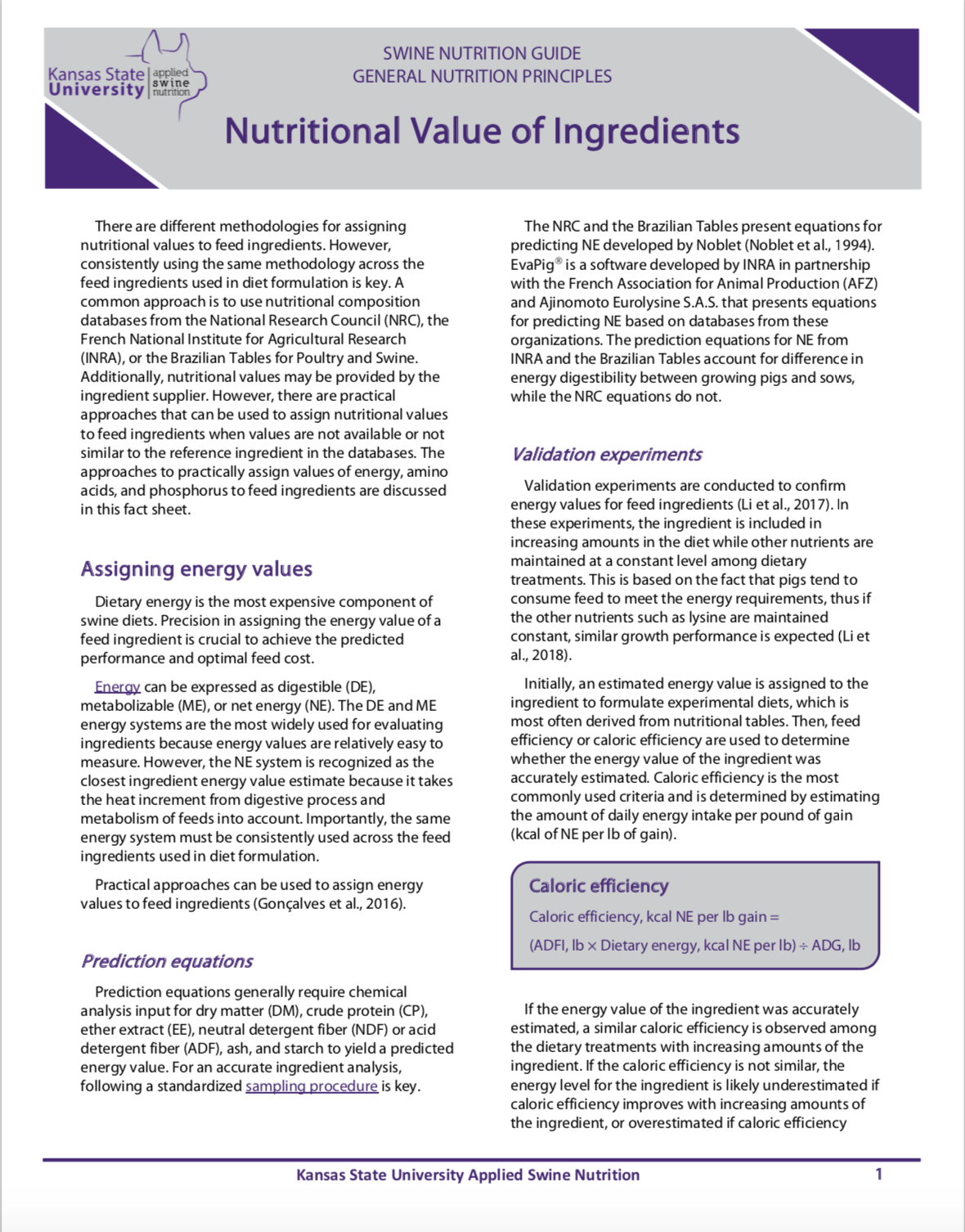Assigning amino acid values
Protein is essential for growth and development of swine. Accurate determination of digestible amino acids in a feed ingredient is important to achieve optimum performance and because protein sources are expensive components of the diet.
Amino acid digestibility is expressed as total tract digestibility or ileal digestibility. The ileal digestibility is more accurate than total tract digestibility because amino acids are exclusively absorbed in the small intestine and microbial fermentation in the large intestine affects the recovery of amino acids. The ileal digestibility is expressed as apparent (AID), standardized (SID), or true (TID) ileal digestibility, depending on how endogenous amino acid losses are considered in the measure of digestibility. The most widely used method to formulate diets and estimate amino acid digestibility is SID.
There are two steps to practically assign SID amino acid values to feed ingredients (Boisen, 1998):
- Amino acid analysis: The first step is to submit the feed ingredient to analysis of crude protein and amino acids.
- Digestibility value: The second step is to assign SID values to the crude protein and amino acids level in the feed ingredient. The most common approach is to use digestibility values from nutritional tables (NRC, INRA, or the Brazilian Tables), scientific literature, or university databases. Ideally, the digestibility of the same ingredient is used, but ingredients with similar characteristics can also serve as a reference for digestibility.
